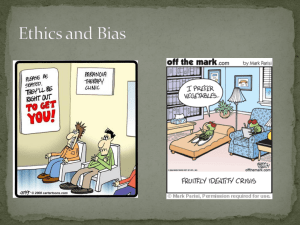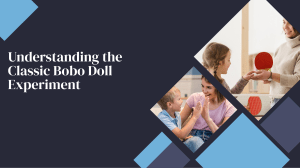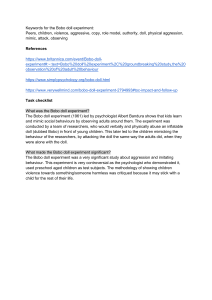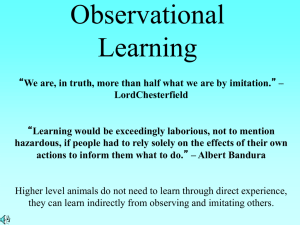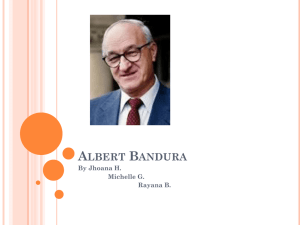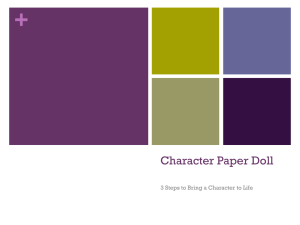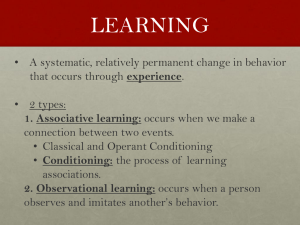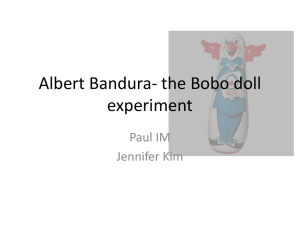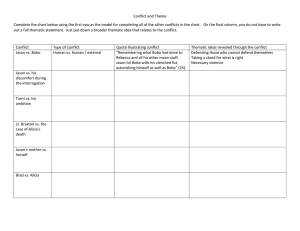Social Learning JULIAN
advertisement
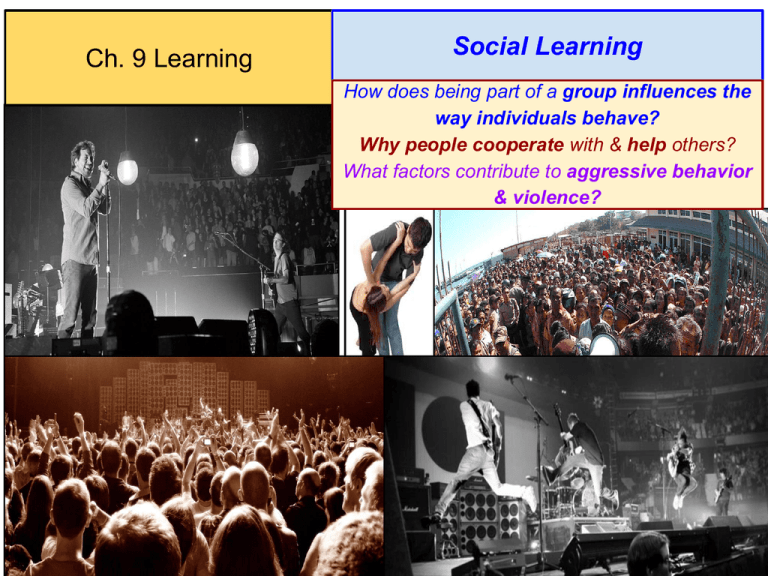
Ch. 9 Learning Social Learning How does being part of a group influences the way individuals behave? Why people cooperate with & help others? What factors contribute to aggressive behavior & violence? Social Learning The process of altering behavior by observing and imitating the behavior of others. Go beyond stimuli and mechanical responses! Two Types1. Cognitive Learning 2. Modeling Cognitive Learning • Focuses on how information is obtained, processed, and organized. • Latent Learning – Learning without meaning to. • Learned Helplessness – After repeated failures, the resulting belief is that situations are uncontrollable. Modeling • “Observation and imitation learning” • Clap when others clap • Sit if others are sitting • Mannerisms • Any modeling behavior from “Super Nanny”? What is Observational Learning? Learning by observing and emulating the actions of others through mimicking • Also called social learning • Can be prosocial (positive, constructive, helpful behavior) or antisocial Your coach shows you how to properly swing a baseball bat. You watch a violent action movie on TV, then go out and commit a robbery. Historical Examples Prosocial Behavior Antisocial Behavior Non-violent resistance as a means of peaceful demonstration Sesame Street teaches kids how to behave and learn Other Examples??? 1991 Rodney King beating causing LA race riots Columbine shooters inspired by “Doom” and other violent video games Other Examples??? Bobo Doll Study • In 1961, Albert Bandura conducted an observational learning study – Kids aged 3-6 watched a video of an adult either being nice or cruel to a Bobo Doll – Kids were then placed in the room with the Bobo Doll where the majority mimicked the behavior they had seen in the video – Boys were much more aggressive than girls (by a 3 to 1 margin) – Aggression doubled if the “aggressive model” the kids saw was the same sex as them Bobo Doll Video The Bystander Effect: People are not likely to help others unless they are alone with that person. (Research 1960s & 1970s) If someone needs help & there are many people around, diffusion of responsibility occurs. Bystander effect: probability of someone helping another in distress decreases as # of people available to help increases. **Interestingly, people today are slightly more likely to help because of the wellpublicized research on the bystander effect. YouTube Video: NBC News - Bystander Effect Video: What will people do when they watch a girl being abducted? (6 min) Social learning can also affect how we percieve people when we first meet them… Social Media is a great example of this! How would you react to these people if you were sitting in an empty room? What are some words you would use to stereotype? On Monday… • 30-Days : Jail • Does our country’s “correctional learning” method actually help the rehab criminals who have “learned” violence for some or all of their lives? • Does social learning impact the system? The BoBo Doll Experiment • https://www.youtube.com/watch?v=zerCK0lRj p8

